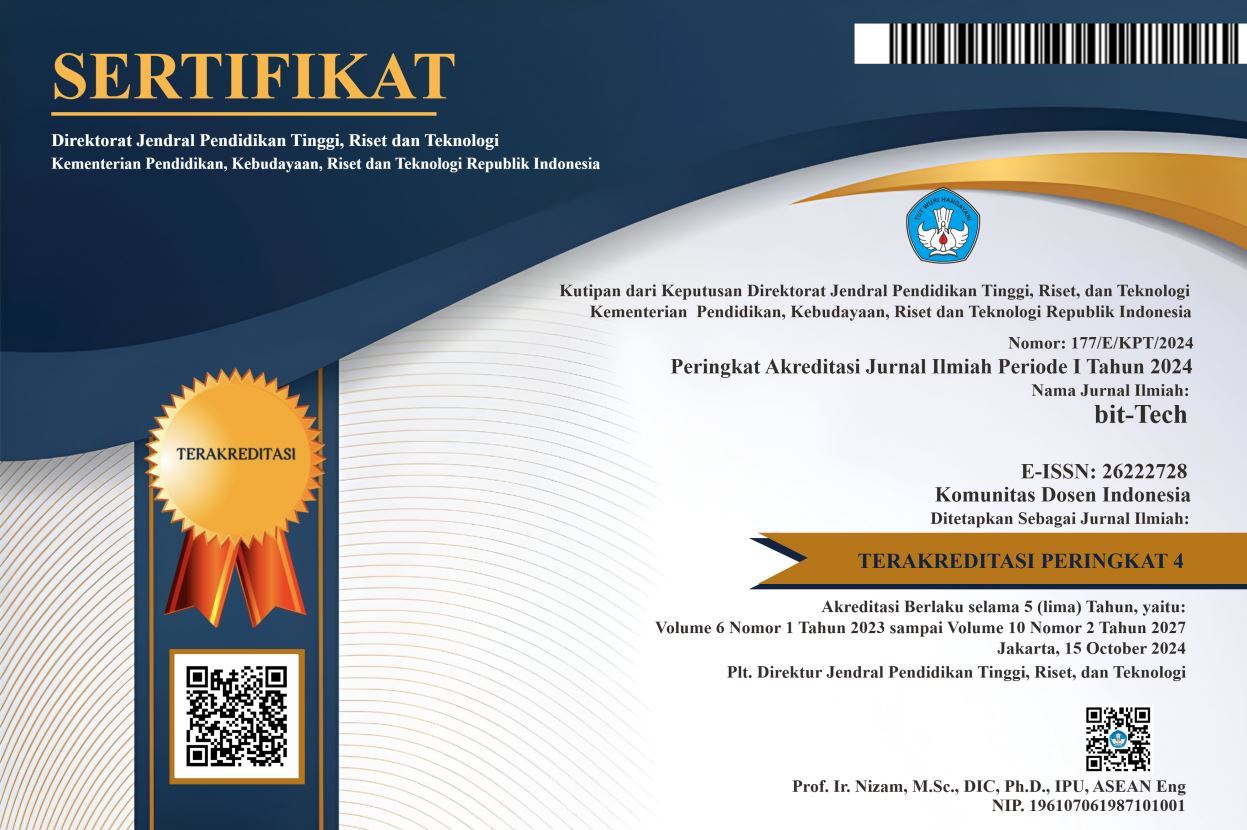Usability of JKN Mobile Application Using System Usability Scale (SUS) Method
DOI:
https://doi.org/10.32877/bt.v5i3.691
Keywords:
HCI, Mobile Application , Mobile JKN, SUS Method, Usability
Abstract
Mobile JKN is a new Government application to register and manage the health protection membership. The problem that often occurs is that many participants do not really understand the application and their use. Therefore, JKN mobile application needs to be adjusted and developed so that the usefulness and benefits can be felt by the participants and the wider community. The method used is the System Usability Scale (SUS), a questionnaire that can be used to measure the usability of a computer system according to the user's subjective point of view. In performing SUS calculations using 5-point Likert scale. The first SUS score was obtained from testing the JKN Mobile Application by distributing SUS questionnaires to 23 respondents. The second test was carried out by involving 3 professionals and experts in the science of design and IT. The treatment of the SUS questionnaire in the second test was by adding points of recommendation for improvement to the Mobile JKN application in accordance with the first results in each statement of the second test questionnaire. And the results of the SUS score in this second test experienced a significant increase from 59 to 81, this shows that the recommendations for improvements to the Mobile JKN application need to be improved or need to be developed a lot. The Mobile JKN application needs to be developed a lot in terms of updating and providing information about this application because there are still many and do not understand about the Mobile JKN application.
Downloads
References
M. Nurmalasari, N. Anggita Temesvari, S. Ni, and matul Maula, “Analisis Sentimen terhadap Opini Masyarakat dalam Penggunaan Mobile-JKN untuk Pelayanan BPJS Kesehatan Tahun 2019,” Heal. Inf. Manag. J. ISSN, vol. 8, no. 1, pp. 2655–9129, 2020.
A. Wulandari, “INOVASI BPJS KESEHATAN DALAM PEMEBERIAN LAYANAN KEPADA MASYARAKAT: APLIKASI MOBILE JKN,” J. Public Policy, vol. 5, no. 2, 2019.
R. Komala and A. Firdaus, “Analisis Kualitas Layanan Mobile Jkn Terhadap Kepuasan Peserta Badan Penyelenggara Jaminan Sosial (Bpjs) Kesehatan,” At-tijaroh J. Ilmu Manaj. dan Bisnis Islam, vol. 6, no. 2, pp. 188–199, 2020, doi: 10.24952/tijaroh.v6i2.2520.
W. Krisdayanti, “Pemanfaatan Aplikasi Mobile Jaminan Kesehatan Nasional (JKN) Untuk Meningkatkan Efektivitas Pelayanan BPJS Kesehatan Di Kota Medan,” Universitas Muhammadiyah Sumatera Utara, 2021.
B. O. Lubis, A. Salim, and J. Jefi, “Evaluasi Usability Sistem Aplikasi Mobile JKN Menggunakan Use Questionnaire,” J. SAINTEKOM, vol. 10, no. 1, p. 65, 2020, doi: 10.33020/saintekom.v10i1.131.
V. P. Sabandar and H. B. Santoso, “Evaluasi Aplikasi Media Pembelajaran Statistika Dasar Menggunakan Metode Usability Testing,” Teknika, vol. 7, no. 1, pp. 50–59, 2018, doi: 10.34148/teknika.v7i1.81.
D. Rahadian, G. Rahayu, and R. R. Oktavia, “Teknologi Pendidikan: Kajian Aplikasi Ruangguru Berdasarkan Prinsip dan Paradigma Interaksi Manusia dan Komputer,” J. Petik, vol. 5, no. 1, pp. 11–24, 2019, doi: 10.31980/jpetik.v5i1.489.
S. Saxena, P. Saxena, and S. K. Dubey, “Various levels of human stress & their impact on human computer interaction,” 2013 Int. Conf. Hum. Comput. Interact. ICHCI 2013, 2013, doi: 10.1109/ICHCI-IEEE.2013.6887808.
G. Chao, “Human-computer interaction: Process and principles of human-computer interface design,” Proc. - 2009 Int. Conf. Comput. Autom. Eng. ICCAE 2009, pp. 230–233, 2009, doi: 10.1109/ICCAE.2009.23.
“Jurnal Interaksi Manusia dan Komputer STIKOM Yos Sudarso Purwokerto.”
Y. Liu, “Human-Computer Interface Design Based on Design Psychology,” 2020 Int. Conf. Intell. Comput. Human-Computer Interact. ICHCI 2020 Proc. Sanya, China, 4-6 December 2020., p. 434, 2020.
A. Bangor, P. Kortum, and J. Miller, “Determining what individual SUS scores mean; adding an adjective rating,” J. usability Stud., vol. 4, no. 3, pp. 114–23, 2009.
“Journal of Research on Technology in Education | Taylor & Francis Online.”.
Z. Sharfina and H. B. Santoso, “An Indonesian adaptation of the System Usability Scale (SUS),” 2016 Int. Conf. Adv. Comput. Sci. Inf. Syst. ICACSIS 2016, pp. 145–148, 2017, doi: 10.1109/ICACSIS.2016.7872776.
J. Sauro and J. R. Lewis, "Quantifying the user experience : practical statistics for user research", p. 295, 2012.
Downloads
Published
How to Cite
Issue
Section
License
Copyright (c) 2023 bit-Tech

This work is licensed under a Creative Commons Attribution-ShareAlike 4.0 International License.
I hereby assign and transfer to bit-Tech all exclusive copyright ownership rights to the above work. This includes, but is not limited to, the right to publish, republish, downgrade, distribute, transmit, sell, or use the work and other related materials worldwide, in whole, or in part, in all languages, in electronic, printed, or any other form of media, now known or hereafter developed and reserves the right to permit or license a third party to do any of the above. I understand that this exclusive right will belong to bit-Tech from the date the article is accepted for publication. I also understand that bit-Tech, as the copyright owner, has sole authority to license and permit reproduction of the article. I understand that, except for copyright, any other proprietary rights associated with the work (e.g. patents or other rights to any process or procedure) must be retained by the author. In addition, I understand that bit-Tech permits authors to use their papers in any way permitted by the applied Creative Commons license.


 DOI :
DOI :
 Abstract views: 618
/
Abstract views: 618
/  PDF downloads: 559
PDF downloads: 559











